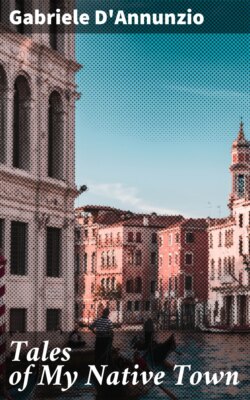Читать книгу Tales of My Native Town - Gabriele D'Annunzio - Страница 6
На сайте Литреса книга снята с продажи.
III
ОглавлениеTable of Contents
Yet, with the attention directed so exclusively upon national differences, equally it must be said that no individual has ever written into literature a more minute examination of actuality than that in “Tales of My Native Town.” Indeed, to find its counterpart it would be necessary to turn to the relentlessly veracious paintings of the early Dutchmen, or the anatomical canvasses of El Greco. D’Annunzio’s descriptions of countenances are dermatological, the smallest pores are carefully traced, the shape and hue and colour of every feature. This is set down not only directly but by means of remarkable similies: Binchi-Blanche has a surly, yellow-lined face like a lemon without any juice; Africana’s husband’s mouth resembles the cut in a rotten pumpkin; Ciarole’s face was that of a gilded wooden effigy from which the gilding had partly worn off; while Biagio Quaglia reflected the brilliancy and freshness of an almond tree in springtime.
The direct descriptions are often appalling, since, as has already been indicated, nothing is considered unimportant; there are literally no reservations, or rather, no, prejudices. The physical disintegration that accompanies death is, as well, recorded to the last black clot and bubble of red froth. D’Annunzio is not afraid of death in the context of his pages, he is never reluctant to meet the great facts, the terrible penalties, of existence; rather it is upon them that his writing is founded; it has, in the main, in these tales, two sides, one of violence, of murder and venom, and the other an idyllic presentation of a setting, an environment, saturated with classic and natural beauty.
The mind, now horrified by the dislocated beggars gathered about the blind Mungia, is suddenly swept into the release of evening fragrantly cool like myrtles; or Turlendana returns from his long voyages and, with his amazing animals, makes his way home into Pescara: “The river of his native place carried to him the peaceful air of the sea. … The silence was profound. The cobwebs shone tranquilly in the sun like mirrors framed by the crystal of the sea.” He passes with the Cyclopean camel, the monkey and the she-ass across the boat bridge and: “Far behind the mountain of Gran Sasso the setting sun irradiated the spring sky … and from the damp earth, the water of the river, the seas, and the ponds, the moisture had arisen. A rosy glow tinted the houses, the sails, the masts, the plants, and the whole landscape, and the figures of the people, acquiring a sort of transparency, grew obscure, the lines of their contour wavering in the fading light.”
Nothing could surpass in peacefulness this vision, a scene like a mirage of fabulous days wrapped in tender colour. Throughout the tale of The Virgin Anna, too, there are, in spite of the vitriolic realism of its spirit, the crystal ecstasies of white flocks of girls before the Eucharist of their first communion. While it was Anna’s father who came ashore from his voyages to the island of Rota with his shirt all scented with southern fruit. The Virgin Anna has many points of resemblance to that other entranced peasant in Une Vie Simple; but Anna had a turtle in place of a parrot, and D’Annunzio is severer with his subject than was Flaubert.
But such idylls are quickly swept away in the fiery death of the Duke of Orfena, with the pistols ringing in high stately chambers, and Mazzagrogna, the major-domo, a dripping corpse, hanging in the railing of a balcony. There is no shrinking, no evasion, here; and none is permitted the reader:—the flames that consume the Duke are not romantic figments, their fierce energy scorches the imagination.
